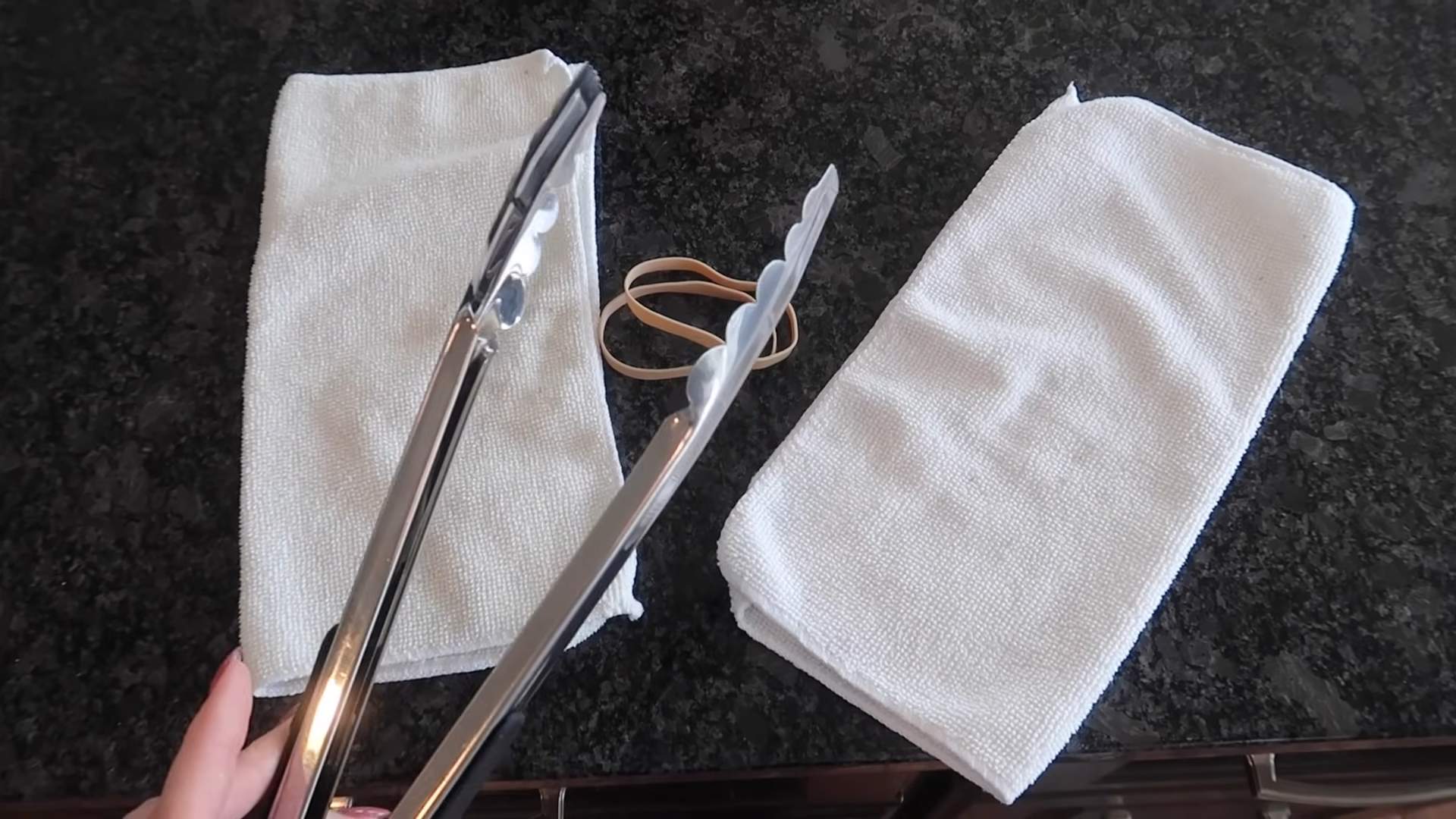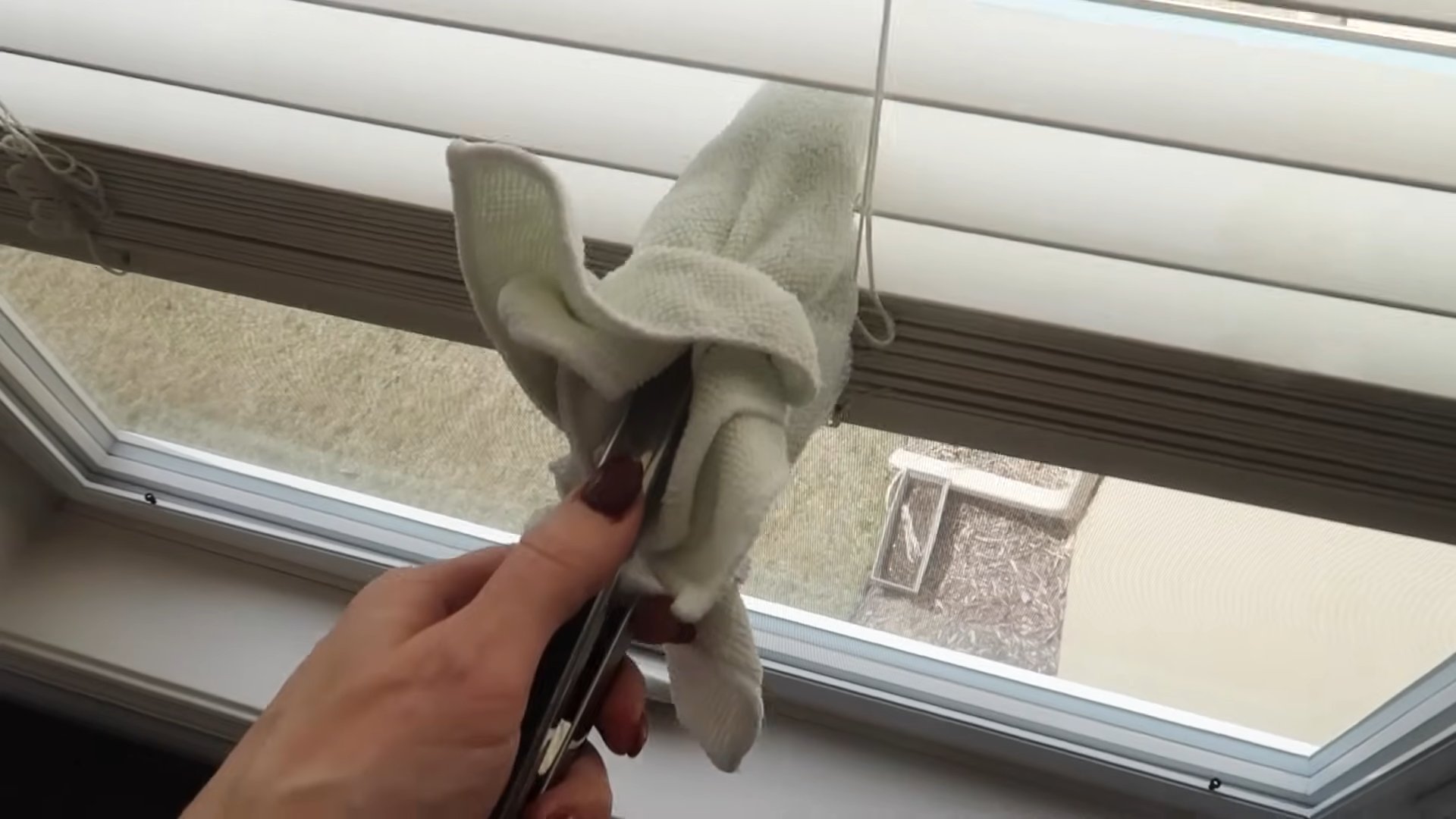Clean blinds fast? Yes, you read that right! Are you tired of spending hours wrestling with dusty, grimy blinds? I know I was! It felt like a never-ending chore, and honestly, I’d rather be doing just about anything else. But fear not, fellow homeowners, because I’m about to share some game-changing DIY tricks that will have your blinds sparkling in no time.
Throughout history, keeping our homes clean has been a sign of care and pride. While our ancestors might not have had the same types of blinds we do today, the desire for a dust-free and bright living space is timeless. Think about it – sunlight streaming through clean blinds just makes a room feel so much more inviting and fresh.
Let’s face it, cleaning blinds is one of those tasks that often gets put on the back burner. It’s fiddly, time-consuming, and frankly, a bit of a pain. But neglecting your blinds can lead to a build-up of dust and allergens, which can impact your indoor air quality. Plus, clean blinds simply look better! That’s why I’m so excited to share these simple yet effective DIY methods that will help you clean blinds fast and efficiently, without breaking the bank or spending your entire weekend on this one chore. Get ready to say goodbye to dusty blinds and hello to a brighter, cleaner home!

DIY Blind Cleaning Hack: Sparkling Blinds in Minutes!
Okay, let’s be honest, cleaning blinds is nobody’s favorite chore. It’s fiddly, dusty, and seems to take forever. But fear not! I’ve discovered a super simple, surprisingly effective hack that will have your blinds sparkling in no time. This method uses common household items, so you probably already have everything you need. Get ready to say goodbye to dusty blinds and hello to a brighter, cleaner home!
What You’ll Need
Before we dive in, let’s gather our supplies. This is a quick and easy project, so the list is short:
* Microfiber cloth (or an old sock – seriously!)
* White vinegar
* Warm water
* Spray bottle
* Bowl or bucket
* Dish soap (optional, for extra dirty blinds)
Preparing Your Cleaning Solution
The key to this hack is the cleaning solution. It’s gentle, effective, and smells way better than harsh chemicals.
1. Mix the Solution: In your bowl or bucket, combine equal parts white vinegar and warm water. I usually start with about 1 cup of each, but you can adjust the amount depending on how many blinds you need to clean.
2. Add Dish Soap (Optional): If your blinds are particularly grimy, add a squirt of dish soap to the mixture. Just a little bit will do – too much and you’ll have a hard time rinsing.
3. Transfer to Spray Bottle: Pour the solution into your spray bottle. This will make it much easier to apply to the blinds.
The Sock (or Microfiber Cloth) Cleaning Method
This is where the magic happens! Using a sock or microfiber cloth as a cleaning tool is genius because it allows you to clean both sides of the blind slat at the same time.
1. Prepare Your Cleaning Tool: If you’re using a sock, simply slip it onto your hand like a glove. If you’re using a microfiber cloth, wrap it around your hand and secure it with a rubber band or hair tie. This will keep the cloth from slipping off.
2. Spray the Blind Slats: Lightly spray the blind slats with your cleaning solution. Don’t saturate them – a light mist is all you need. Work in sections, spraying a few slats at a time.
3. Wipe the Slats: Now, gently pinch each slat between your thumb and forefinger (covered by the sock or cloth, of course!). Slide your hand along the length of the slat, cleaning both sides simultaneously.
4. Rinse (If Necessary): If you used dish soap in your cleaning solution, or if your blinds are particularly dirty, you may want to rinse them with a damp cloth. Simply wipe each slat with a clean, damp cloth to remove any residue.
5. Dry the Blinds: Allow the blinds to air dry completely. You can open a window or turn on a fan to speed up the process.
Alternative Method: Microfiber Duster
If you prefer not to use a sock or cloth on your hand, a microfiber duster can also work well.
1. Spray the Duster: Lightly spray the microfiber duster with your cleaning solution. Again, don’t saturate it.
2. Dust the Blinds: Use the duster to wipe each slat, working from top to bottom. You may need to go over each slat a few times to remove all the dust and grime.
3. Rinse (If Necessary): If you used dish soap, rinse the blinds with a damp cloth.
4. Dry the Blinds: Allow the blinds to air dry completely.
Dealing with Stubborn Stains
Sometimes, you’ll encounter stubborn stains that just won’t budge with the regular cleaning solution. Here’s how to tackle them:
1. Make a Paste: Mix baking soda with a little bit of water to create a thick paste.
2. Apply the Paste: Apply the paste to the stain and let it sit for a few minutes.
3. Scrub Gently: Use a soft-bristled brush or a damp cloth to gently scrub the stain.
4. Rinse Thoroughly: Rinse the area with a clean, damp cloth to remove all traces of the baking soda paste.
5. Dry the Blinds: Allow the blinds to air dry completely.
Preventative Measures: Keeping Blinds Clean Longer
Once you’ve cleaned your blinds, you’ll want to keep them clean for as long as possible. Here are a few tips:
* Dust Regularly: Dust your blinds regularly with a dry microfiber cloth or duster. This will prevent dust from building up and becoming harder to remove.
* Vacuum with Brush Attachment: Use your vacuum cleaner with the brush attachment to gently vacuum your blinds. This is a quick and easy way to remove dust and debris.
* Control Humidity: High humidity can contribute to dust buildup. Use a dehumidifier in rooms with high humidity to help keep your blinds clean.
* Open Windows Strategically: When opening windows, be mindful of the direction of the wind. Opening windows on a windy day can blow dust and dirt onto your blinds.
Cleaning Different Types of Blinds
This cleaning method works well for most types of blinds, but here are a few things to keep in mind for specific materials:
* Vinyl Blinds: Vinyl blinds are very durable and can withstand a more vigorous cleaning. You can use a slightly stronger cleaning solution, such as a mixture of bleach and water (be sure to test in an inconspicuous area first!).
* Wood Blinds: Wood blinds are more delicate and require a gentler approach. Avoid using too much water, as this can damage the wood. Use a dry microfiber cloth or a slightly damp cloth with a mild cleaning solution.
* Aluminum Blinds: Aluminum blinds are relatively easy to clean. You can use the same cleaning solution as for vinyl blinds.
* Fabric Blinds: Fabric blinds are the most difficult to clean. You may need to spot clean them with a fabric cleaner or take them to a professional cleaner.
Safety First!
While this cleaning hack is generally safe, here are a few safety precautions to keep in mind:
* Test in an Inconspicuous Area: Before cleaning your entire blinds, test the cleaning solution in an inconspicuous area to make sure it doesn’t damage the material.
* Wear Gloves: If you have sensitive skin, wear gloves to protect your hands from the cleaning solution.
* Ventilate the Area: Open a window or turn on a fan to ventilate the area while you’re cleaning.
* Keep Out of Reach of Children and Pets: Keep the cleaning solution and supplies out of reach of children and pets.
Troubleshooting
* Streaks: If you’re getting streaks on your blinds, try using a clean, dry microfiber cloth to buff them after cleaning.
* Sticky Residue: If you’re getting sticky residue on your blinds, you may be using too much dish soap. Rinse the blinds thoroughly with a clean, damp cloth.
* Dust Returning Quickly: If your blinds are getting dusty again quickly, make sure you’re dusting them regularly and controlling humidity in your home.
Why This Hack Works
The combination of white vinegar and warm water is a powerful cleaning agent. Vinegar is a natural disinfectant and degreaser, while warm water helps to loosen dirt and grime. The microfiber cloth or sock provides a gentle yet effective way to scrub the blinds without scratching them. This method is also eco-friendly and cost-effective, as it uses common household items instead of harsh chemicals.
My Personal Experience
I’ve been using this blind cleaning hack for years, and it’s saved me so much time and effort. Before, I dreaded cleaning my blinds, but now it’s a quick and easy task. I especially love that it uses natural ingredients and doesn’t leave behind any harsh chemical smells. My blinds are always sparkling clean, and my home feels brighter and more inviting. I hope you find this hack as helpful as I have!
Frequently Asked Questions (FAQs)
* How often should I clean my blinds? I recommend cleaning your blinds at least once a month, or more often if you live in a dusty area.
* Can I use this method on all types of blinds? This method works well for most types of blinds, but be sure to test in an inconspicuous area first, especially for delicate materials like wood or fabric.
* Can I use a different type of vinegar? White vinegar is the best choice for cleaning blinds, as it’s clear and doesn’t leave behind any residue. You can use apple cider vinegar in a pinch, but it may leave a slight odor.
* Can I add essential oils to the cleaning solution? Yes, you can add a few drops of essential oils to the cleaning solution for a pleasant scent. Lavender, lemon, and eucalyptus are all good choices.
* What if my blinds are really dirty

Conclusion
So, there you have it! This simple, yet incredibly effective DIY trick for cleaning blinds fast is a game-changer. Forget spending hours meticulously wiping each individual slat, battling dust bunnies, and ending up with aching arms. This method offers a streamlined, efficient, and surprisingly satisfying way to restore your blinds to their former glory.
Why is this a must-try? Because time is precious! We all have busy lives, and spending less time on chores like cleaning blinds means more time for the things we truly enjoy. This DIY approach not only saves you time but also money. You likely already have the necessary supplies – a pair of old socks, some white vinegar, and a spray bottle. No need to invest in expensive cleaning solutions or specialized tools.
Beyond the sheer efficiency, this method is also gentle on your blinds. Harsh chemicals can damage the finish or even warp the slats over time. Using a simple vinegar solution is a natural and effective way to lift dirt and grime without causing any harm.
Looking for variations? Absolutely!
* For extra stubborn grime: Add a few drops of dish soap to your vinegar solution. Just be sure to rinse the socks thoroughly with clean water after wiping to avoid any soapy residue.
* For a fresh scent: Infuse your vinegar solution with a few drops of your favorite essential oil, such as lemon, lavender, or eucalyptus. This will leave your blinds smelling clean and fresh.
* For different blind types: This method works well on most types of blinds, including Venetian blinds, mini blinds, and even some types of vertical blinds. However, always test a small, inconspicuous area first to ensure the solution doesn’t damage the material. For fabric blinds, consider using a dry sock and vacuuming first to remove loose dust.
* For cordless blinds: Be extra careful when cleaning cordless blinds, as the mechanisms can be delicate. Avoid getting the cleaning solution directly inside the headrail.
We are confident that once you try this DIY trick for cleaning blinds fast, you’ll never go back to your old methods. It’s quick, easy, affordable, and effective.
Now, it’s your turn! Give this DIY method a try and see the difference for yourself. We’re eager to hear about your experience. Did it work as well for you as it did for us? Did you discover any helpful variations or tips? Share your thoughts, photos, and videos in the comments below! Let’s build a community of clean-blind enthusiasts and help each other conquer this common household chore. Your feedback is invaluable and will help us refine and improve this method for everyone. Don’t forget to share this article with your friends and family so they can benefit from this time-saving trick too! Let’s make cleaning blinds fast a breeze for everyone!
FAQ
Frequently Asked Questions About Cleaning Blinds Fast
Q: What kind of vinegar should I use?
A: White vinegar is the best option for cleaning blinds. It’s a natural disinfectant, deodorizer, and grease cutter. Avoid using colored vinegars, such as apple cider vinegar, as they may stain lighter-colored blinds. The acidity of white vinegar is perfect for breaking down grime without damaging most blind materials.
Q: Can I use this method on all types of blinds?
A: This method is generally safe for most types of blinds, including Venetian blinds, mini blinds, faux wood blinds, and aluminum blinds. However, it’s always a good idea to test a small, inconspicuous area first to ensure the solution doesn’t damage the material. For fabric blinds, consider using a dry sock and vacuuming first to remove loose dust before attempting any wet cleaning. If you have delicate or antique blinds, consult a professional cleaner before attempting any DIY cleaning methods.
Q: How often should I clean my blinds?
A: The frequency of cleaning depends on several factors, including the location of your blinds, the amount of dust in your home, and whether you have pets. As a general rule, cleaning your blinds every 2-3 months is a good starting point. If you live in a dusty area or have pets, you may need to clean them more frequently. Regular dusting with a dry cloth or vacuum cleaner attachment can also help to keep your blinds clean between deep cleanings.
Q: What if my blinds are really dirty?
A: If your blinds are heavily soiled, you may need to pre-treat them before using the sock method. You can do this by spraying them with a vinegar solution and letting it sit for a few minutes to loosen the grime. For particularly stubborn stains, you can try using a soft-bristled brush to gently scrub the affected area. Remember to always test a small, inconspicuous area first to ensure the brush doesn’t damage the material.
Q: Can I use other cleaning solutions besides vinegar?
A: While vinegar is a natural and effective cleaning solution, you can also use other mild cleaning solutions, such as dish soap diluted in water. However, avoid using harsh chemicals or abrasive cleaners, as they can damage the finish or warp the slats. Always test any new cleaning solution on a small, inconspicuous area first.
Q: How do I clean vertical blinds using this method?
A: For vertical blinds, you can adapt the sock method by using one sock to hold the blind slat in place and the other sock to wipe it clean. Start at the top of the blind and work your way down, overlapping each pass slightly. You may need to use a ladder or step stool to reach the top of the blinds. Be careful not to apply too much pressure, as this could damage the slats.
Q: How do I prevent my blinds from getting dusty so quickly?
A: There are several things you can do to prevent your blinds from getting dusty so quickly. Regularly dusting your blinds with a dry cloth or vacuum cleaner attachment can help to remove loose dust before it accumulates. You can also use an air purifier to reduce the amount of dust in your home. Keeping your windows closed during dusty periods can also help to prevent dust from entering your home.
Q: Is it safe to use this method if I have allergies?
A: Vinegar is generally considered safe for people with allergies. However, if you are sensitive to vinegar, you may want to wear gloves and a mask while cleaning your blinds. You can also try using a different cleaning solution, such as dish soap diluted in water. If you experience any allergic reactions, such as skin irritation or difficulty breathing, stop using the cleaning solution immediately and consult a doctor.
Q: How do I dry my blinds after cleaning them?
A: After cleaning your blinds, you can let them air dry. Open your windows to allow for good ventilation. You can also use a clean, dry cloth to wipe off any excess moisture. Avoid closing your blinds until they are completely dry, as this could trap moisture and lead to mildew growth.
Q: What if I accidentally get the cleaning solution on my walls or furniture?
A: If you accidentally get the cleaning solution on your walls or furniture, wipe it off immediately with a clean, damp cloth. Vinegar can damage some surfaces, so it’s important to act quickly. If the stain persists, you may need to use a specialized cleaning product.





Leave a Comment